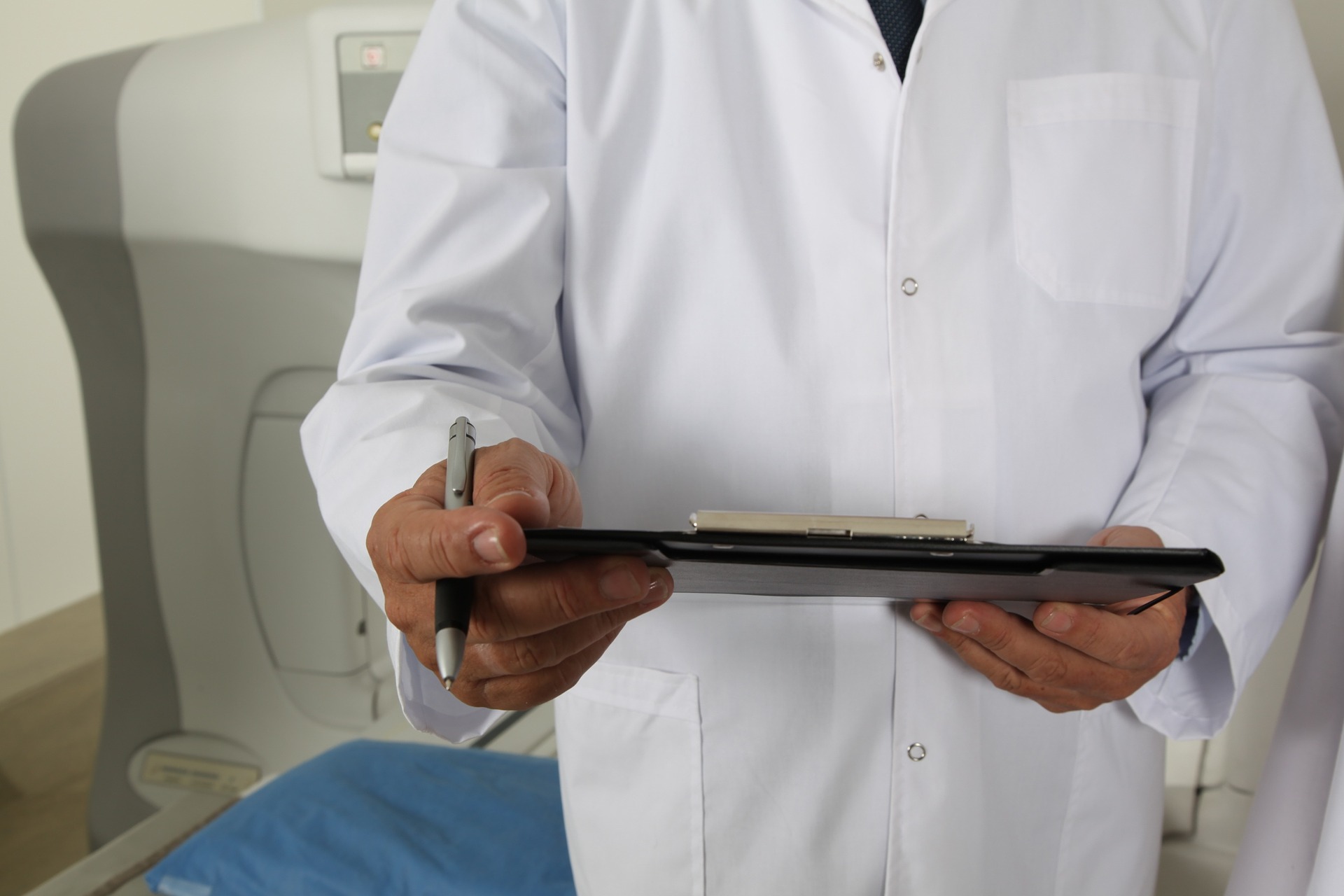Diagnosis
 When you first see your GP, they will ask about your symptoms and whether you have a family history of bowel cancer.
When you first see your GP, they will ask about your symptoms and whether you have a family history of bowel cancer.
They will then usually carry out a simple examination of your abdomen and your bottom, known as a DRE.
This is a useful way of checking whether there are any lumps in your tummy or back passage. The tests can be uncomfortable, and most people find an examination of the back passage a little embarrassing, but they take less than a minute.
If your symptoms suggest you may have bowel cancer or the diagnosis is uncertain, you will be referred to your local hospital initially for a simple examination called a flexible sigmoidoscopy.
Flexible sigmoidoscopy
A flexible sigmoidoscopy is an examination of your rectum and some of your large bowel using a device called a sigmoidoscope.
A sigmoidoscope is a long, thin, flexible tube attached to a very small camera and light. It is inserted into your rectum and up into your bowel.
The camera relays images to a monitor, and can also be used to take biopsies, where a small tissue sample is removed for further analysis.
It is better for your lower bowel to be as empty as possible when sigmoidoscopy is performed, so you may be asked to carry out an enema – a simple procedure to flush your bowels – at home beforehand. This should be used at least two hours before you leave home for your appointment.
A sigmoidoscopy can feel uncomfortable, but it only takes a few minutes and most people go home straight after the examination.
More detailed tests
Most people with bowel cancer can be diagnosed by flexible sigmoidoscopy. However, some cancers can only be diagnosed by a more extensive examination of the colon.
The two tests used for this are colonoscopy and CT colonography. These tests are described in more detail below.
Colonoscopy
A colonoscopy is an examination of your entire large bowel using a device called a colonoscope, which is like a sigmoidoscope but a bit longer.
Your bowel needs to be empty when a colonoscopy is performed, so you will be advised to eat a special diet for a few days beforehand and take a laxative on the morning of the examination.
You will be given a sedative to help you relax during the test, after which the doctor will insert the colonoscope into your rectum and move it along the length of your large bowel. This is not usually painful, but can feel uncomfortable.
The camera relays images to a monitor, which allows the doctor to check for any abnormal areas within the rectum or bowel that could be the result of cancer. As with a sigmoidoscopy, a biopsy may also be performed during the test.
A colonoscopy usually takes about an hour to complete, and most people can go home once they have recovered from the effects of the sedative.
After the procedure, you will probably feel drowsy for a while, so you will need to arrange for someone to accompany you home. It is best for elderly people to have someone with them for 24 hours after the test. You will be advised not to drive for 24 hours.
In a small number of people, it may not be possible to pass the colonoscope completely around the bowel, and it is then necessary to have CT colonography.
Watch What happens during a colonoscopy? for more information about what a colonoscopy involves.
CT colonography
CT colonography, also known as a "virtual colonoscopy", involves using a computerised tomography (CT) scanner to produce three-dimensional images of the large bowel and rectum. During the procedure, gas is used to inflate the bowel using a thin, flexible tube placed in your rectum. CT scans are then taken from a number of different angles.
As with a colonoscopy, you may need to have a special diet for a few days and take a laxative before the test to ensure your bowels are empty when the test is carried out.
This test can help identify potentially cancerous areas in people who are not suitable for a colonoscopy because of other medical reasons.
A CT colonography is a less invasive test than a colonoscopy, but you may still need to have colonoscopy or flexible sigmoidoscopy at a later stage so any abnormal areas can be removed or biopsied.
Want to know more?
- Association of Coloproctology of Great Britain and Ireland: bowel cancer symptom checker
- Beating Bowel Cancer: diagnosis
- Bowel Cancer Information: hospital tests
- Cancer Research UK: bowel cancer tests
- Macmillan: diagnosing colon cancer
Further tests
If a diagnosis of bowel cancer is confirmed, further testing is usually carried out to check if the cancer has spread from the bowel to other parts of the body. These tests also help your doctors decide on the most effective treatment for you.
These tests can include:
- a CT scan of your abdomen and chest – this will check if the rest of your bowel is healthy and whether the cancer has spread to the liver or lungs
- an MRI scan – this can provide a detailed image of the surrounding organs in people with cancer in the rectum
Staging
After all tests have been completed, it's usually possible to determine the stage of your cancer.
There are two ways that bowel cancer can be staged. The first is known as the TNM staging system:
 T – indicates the size of the tumour
T – indicates the size of the tumour- N – indicates whether the cancer has spread to nearby lymph nodes
- M – indicates whether the cancer has spread to other parts of the body (metastasis)
Bowel cancer is also staged numerically. The four main stages are:
- stage 1 – the cancer is still contained within the lining of the bowel or rectum
- stage 2 – the cancer has spread beyond the layer of muscle surrounding the bowel and may have penetrated the surface covering the bowel or nearby organs
- stage 3 – the cancer has spread into nearby lymph nodes
- stage 4 – the cancer has spread beyond the bowel into another part of the body, such as the liver
Bowel cancer screening
Everyone aged 60 to 74 is eligible for bowel cancer screening, this involves using testing kit to demonstrated the presence of blood in your stool.
This can help detect bowel cancer before symptoms appear, making it easier to treat and improving the chances of survival.
Read more about bowel cancer screening.
The content is offered for informational and educational purposes only, and is not intended to be a substitute for medical advice, diagnosis or treatment.


